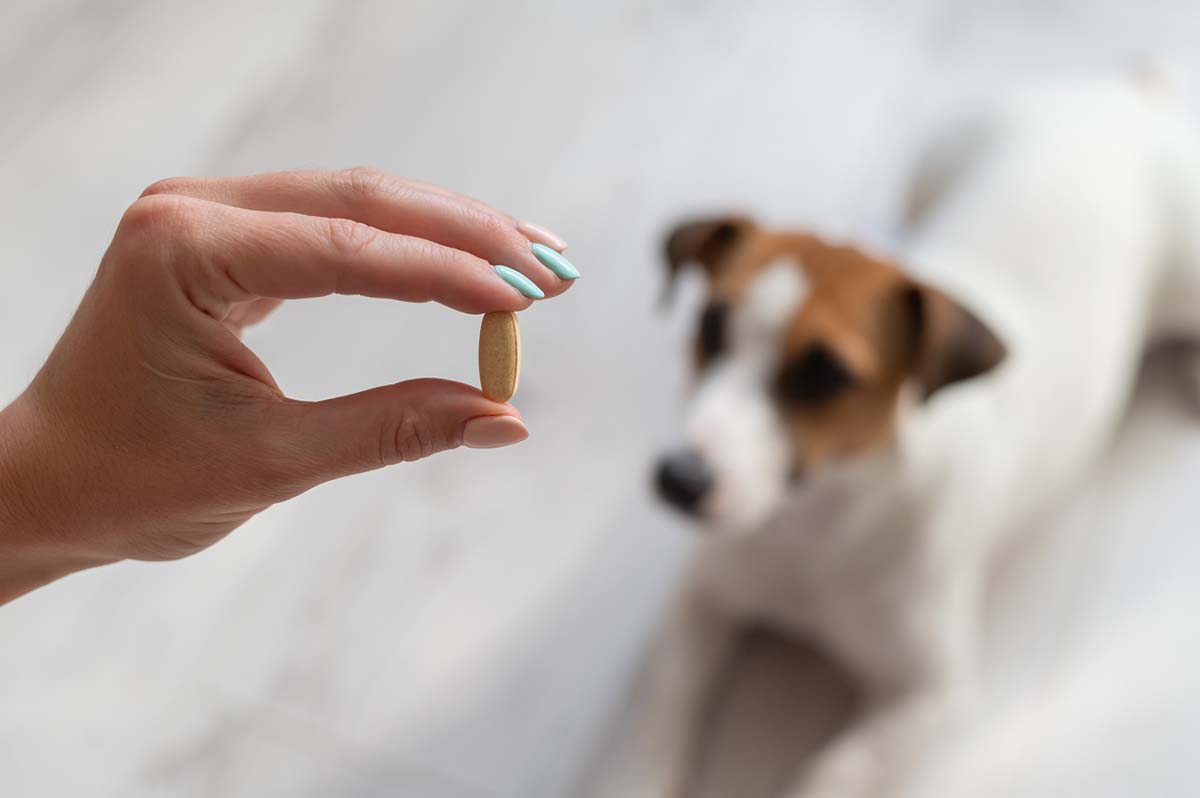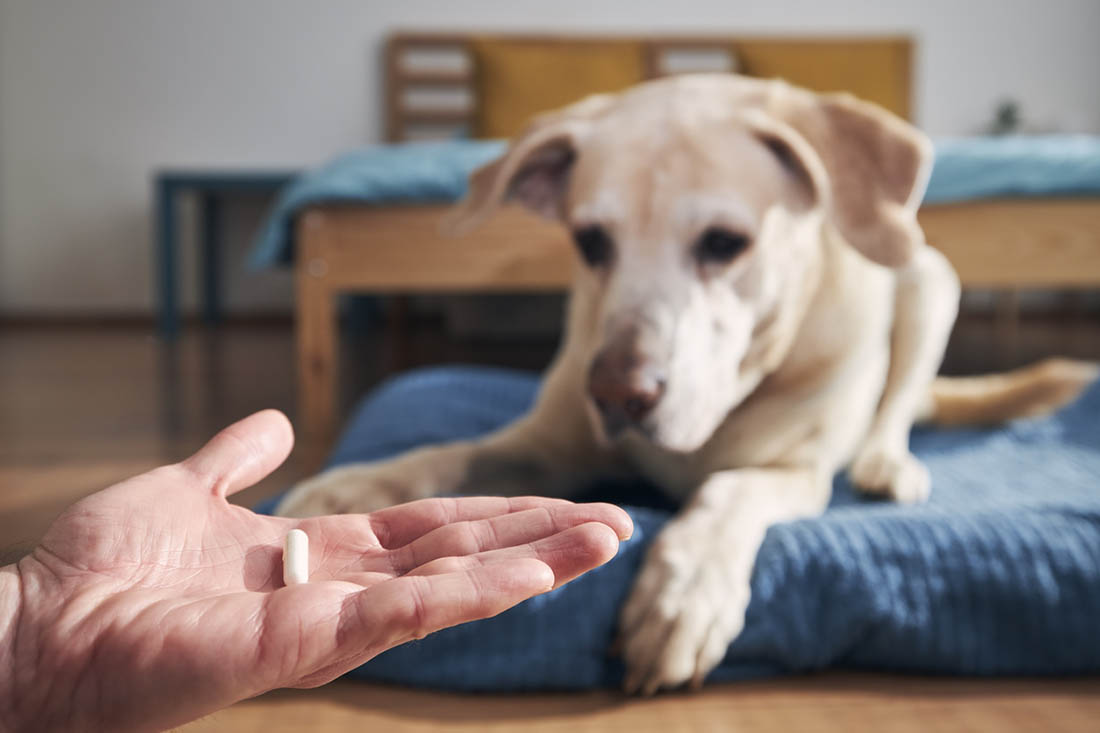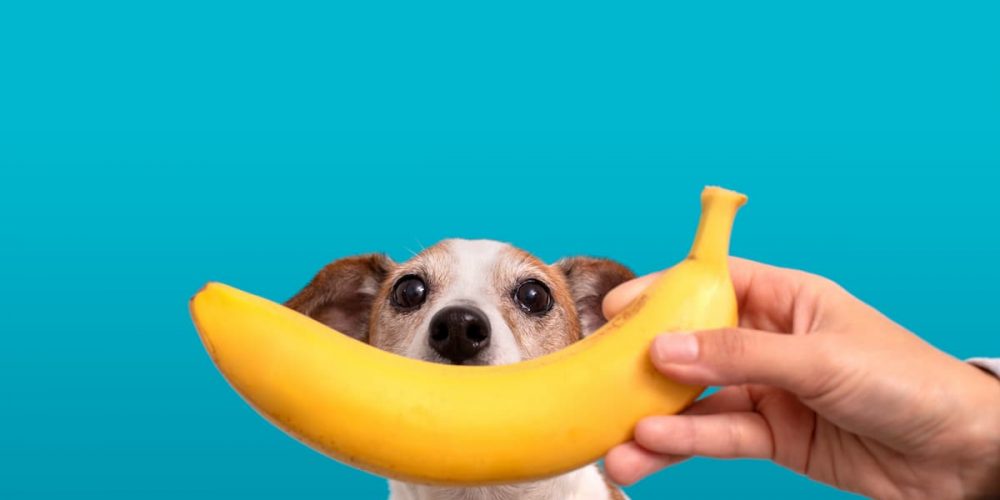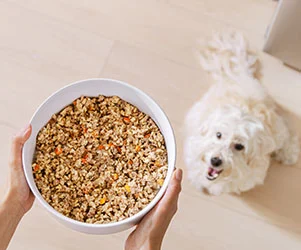Summary
Need to give your dog a pill on an empty stomach? Here’s what works:
- Place it at the back of the tongue, close your dog’s mouth, and gently rub their throat to encourage swallowing.
- Pill guns and pet pillars can make the job easier and safer.
- For liquid meds, use a syringe to squirt the medication between the cheek and upper jaw.
- Ask your vet about chewables, compounded meds, or flavored alternatives.
For the full story, scroll down for the step-by-step guide to pill your pooch without food.
Step-by-Step: How to Give Your Dog a Pill on an Empty Stomach

Real talk: Giving your dog a pill on an empty stomach sounds like an Olympic-style pet care challenge. It’s right up there with bathing an uncooperative St. Bernard. Many dogs make taking a pill an unpleasant task, even with a tantalizing treat like a hot dog or meatball in tow.
If pill pockets, cream cheese, and peanut butter are off the table, you’re going to need to get creative. You’ll need plenty of patience, your hands, and maybe a useful gadget.
Here’s a quick guide to walk you through the process based on Cornell’s Veterinary School.
1. Get in the Right Position
- Gently place your non-dominant hand on top of your dog’s head.
- Use your thumb and forefinger to grasp the upper jaw, aiming beyond the canine teeth
- Tilt your dog’s head back slowly. This action often causes your dog’s mouth to open slightly.
2. Open the lower jaw
- With your dominant hand, use your middle fingers to press down on the lower jaw gently.
- If your dog resists (totally normal), stay calm and whisper sweet nothings to your dog. You can try pressing on your dog’s nose to help tilt his head back further.
3. Place the pill
- Drop the pill as far back on the tongue as possible. Aim for the back of the tongue because it helps trigger a swallow reflex.
- Don’t place it at the front of your dog’s mouth because they’ll spit it out faster than you can say “dog pill.”
4. Close the mouth and encourage swallowing
- Gently close the dog’s mouth and hold it shut.
- Massage the throat or gently blow on your dog’s nose to encourage swallowing.
- Watch for a lick or gulp. Those are signals that your dog swallowed the pill.
This takes practice and patience. If your dog is having none of this, then take a deep breath, step back, and try again later.
Tools That Can Help (a.k.a. Pet Parent Lifesavers)
Pilling a dog is tough under any circumstances, but without a tasty food decoy like deli meats or canned dog food, it’s especially tough. You can’t fault your dog for trying to squirm away. You don’t normally try to make them swallow pills, and it feels uncomfortable for you both.
Sometimes, the easiest way to give dogs pills is to have a second person hold your dog and talk soothingly while you aim to deliver the pill.
Here are some tools to make the process easier and faster.
Pet Piller or Pill Gun
Have you heard of a pet piller or pill gun? They’re like tiny plungers that let you squirt the pill to the back of the mouth without risking your fingers. Your DVM might recommend them for dogs who need oral medication but don’t want to cooperate.
Tip: Wet the pill slightly before placing it in the pill device, as that will help it slide down more easily.
What About Liquid Medication?
If your dog’s medication comes in liquid form, you’re in luck. Instead of fighting with your dog to swallow a pill, you can use a dosing syringe.
- Fill the dosing syringe (usually available from your veterinarian) with the medication.
- Place the tip behind the canine teeth at the back of the tongue, angling toward the upper jaw.
- Gently and slowly squirt the liquid medication into your dog’s mouth, then hold their mouth closed briefly to encourage swallowing. Resist the urge to squirt it hard, as that can cause your dog to gag. Run your fingers down your dog’s throat if needed.
Some liquid medications have a chicken or beef flavor that your dog might really enjoy. If that’s the case, your dog may take the medication as a treat, which is a huge relief.
If you’ve tried these methods and still can’t get your dog to swallow the medication, here’s what you can try.
For Dogs Who Refuse to Swallow
There are stubborn pooches who act like it’s their job not to swallow medication. It’s as if they have a sixth sense about it and refuse. So what’s a pet parent to do?
You can ask about compounding pharmacies. These are specialized pharmacies that turn your dog’s medication into flavored liquids, chewables, or even topical gels you can drop into your dog’s ear.
Some compounding pharmacies offer transdermal options, so you could put a small patch on your dog to administer the medication. Your veterinarian can recommend where to put it, hopefully, it’ll end your dog swallow battles.
A Few Dog Pilling Don’ts
Giving medication comes with all kinds of caveats you might not consider, including:
- Don’t crush pills without asking your vet. Some meds are time-released or coated and need to be given whole.
- Don’t chase pills with peanut butter (or wrap the pill in the peanut butter) unless your vet says it’s ok. Some oral medications need an empty stomach for the body to absorb them.
- Never use xylitol-sweetened foods like sugar-free peanut butter. Xylitol is toxic to dogs.
- Don’t force it too hard. If your dog is panicking or stressed by the pill process, stop and try again later. If the panic continues, contact your veterinarian for suggestions.
For Long-Term Medications
If your floof is on long-term pet medication or supplements and is uncooperative about taking medications, then you need to find a workaround you can both live with for your pet’s health.
Chewables can be good options. Some heartworm preventatives and other meds come in chewables that many dogs like.
Behavioral training works for many dogs. Just like you taught your dog to sit, stay, and come, you may be able to train your dog to accept pills using positive reinforcement, like praise, treats, or wet food (if allowed).
You can start by practicing letting your dog touch his mouth on a regular basis. If your dog is accustomed to you brushing his teeth, this is a good start.
Even veterinary medicine pros have stories about pills spit across a room or creative hacks involving hot dogs, meatballs, or deli meats. Giving your dog medicine isn’t always easy, but it is an act of love and benefits pet health. Otherwise, you wouldn’t do it.
So, whether you’re using a pill gun, trying to sneak a hidden pill in something tasty, or just doing your best to get medication down your dog’s throat without food, there’s hope. Try one of these methods and help your dog feel better.
This content is for informational use only and does not replace professional nutrition and/or medical advice, diagnosis, or treatment. It is not a substitute for and should not be relied upon for specific nutrition and/or medical recommendations. Please talk with your veterinarian about any questions or concerns.
Sources
“Giving Oral Medications to Your Dog.” n.d. Veterinary Teaching Hospital. https://hospital.vetmed.wsu.edu/2022/01/12/giving-oral-medications-to-your-dog/.
“How to Medicate Your Dog.” 2025. Cornell University College of Veterinary Medicine. 2025. https://www.vet.cornell.edu/departments-centers-and-institutes/riney-canine-health-center/canine-health-information/how-medicate-your-dog.
“Transdermal Medications: How They Work and How to Apply Them.” n.d. Vca_corporate. https://vcahospitals.com/know-your-pet/transdermal-medications-how-they-work-and-how-to-apply-them.
Commissioner, Office of the. 2020. “Paws off Xylitol; It’s Dangerous for Dogs.” FDA, September. https://www.fda.gov/consumers/consumer-updates/paws-xylitol-its-dangerous-dogs.





